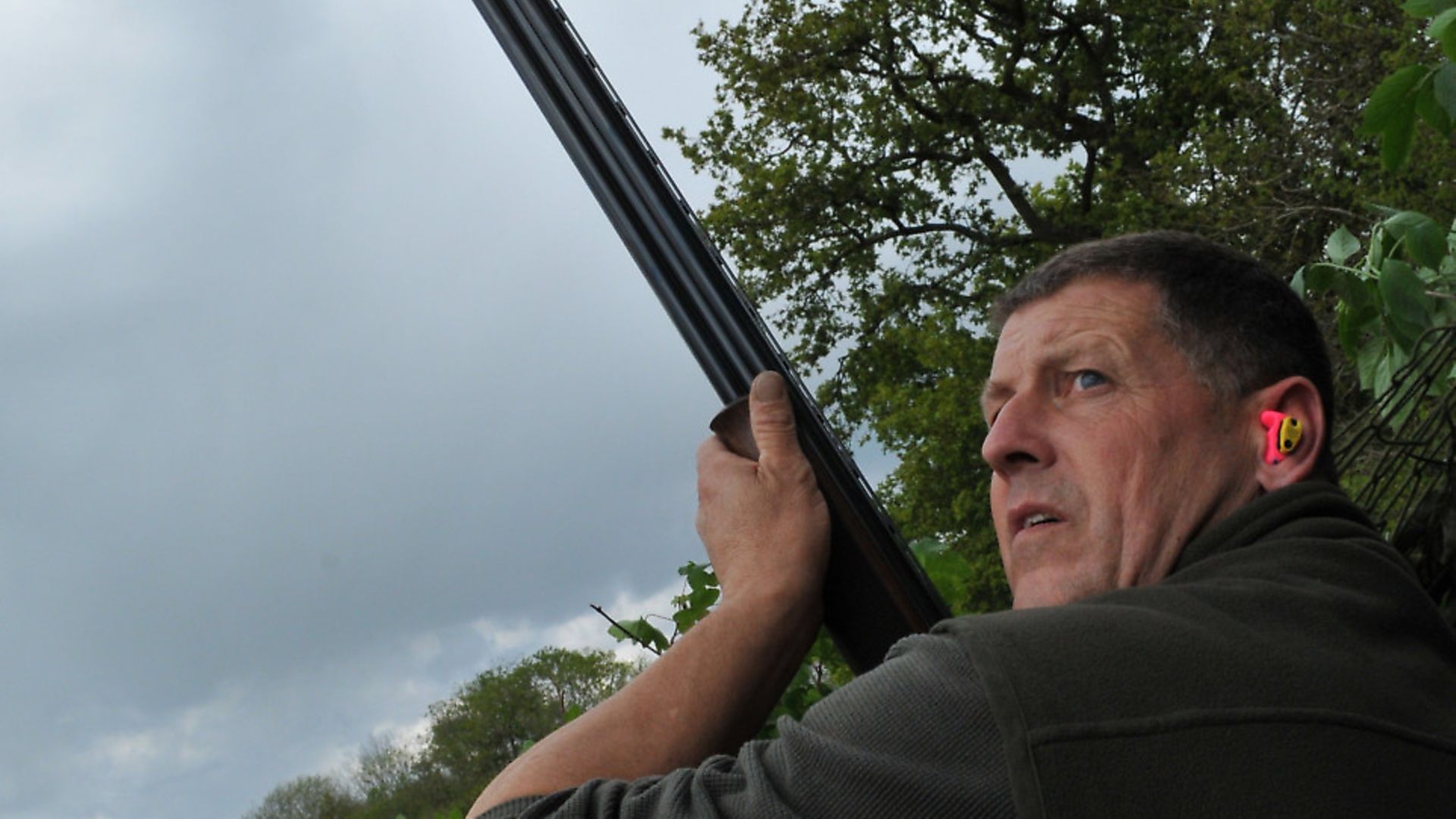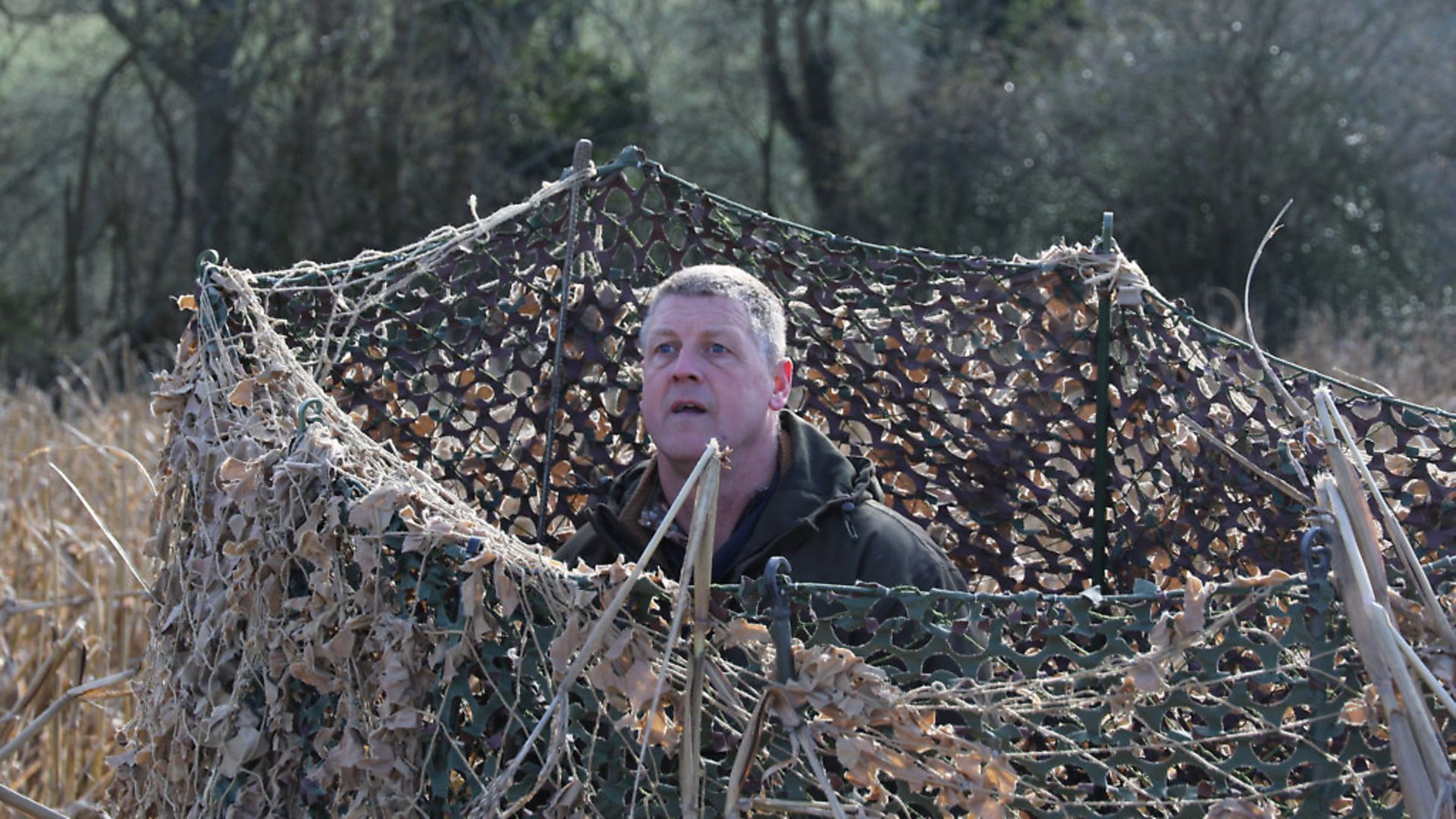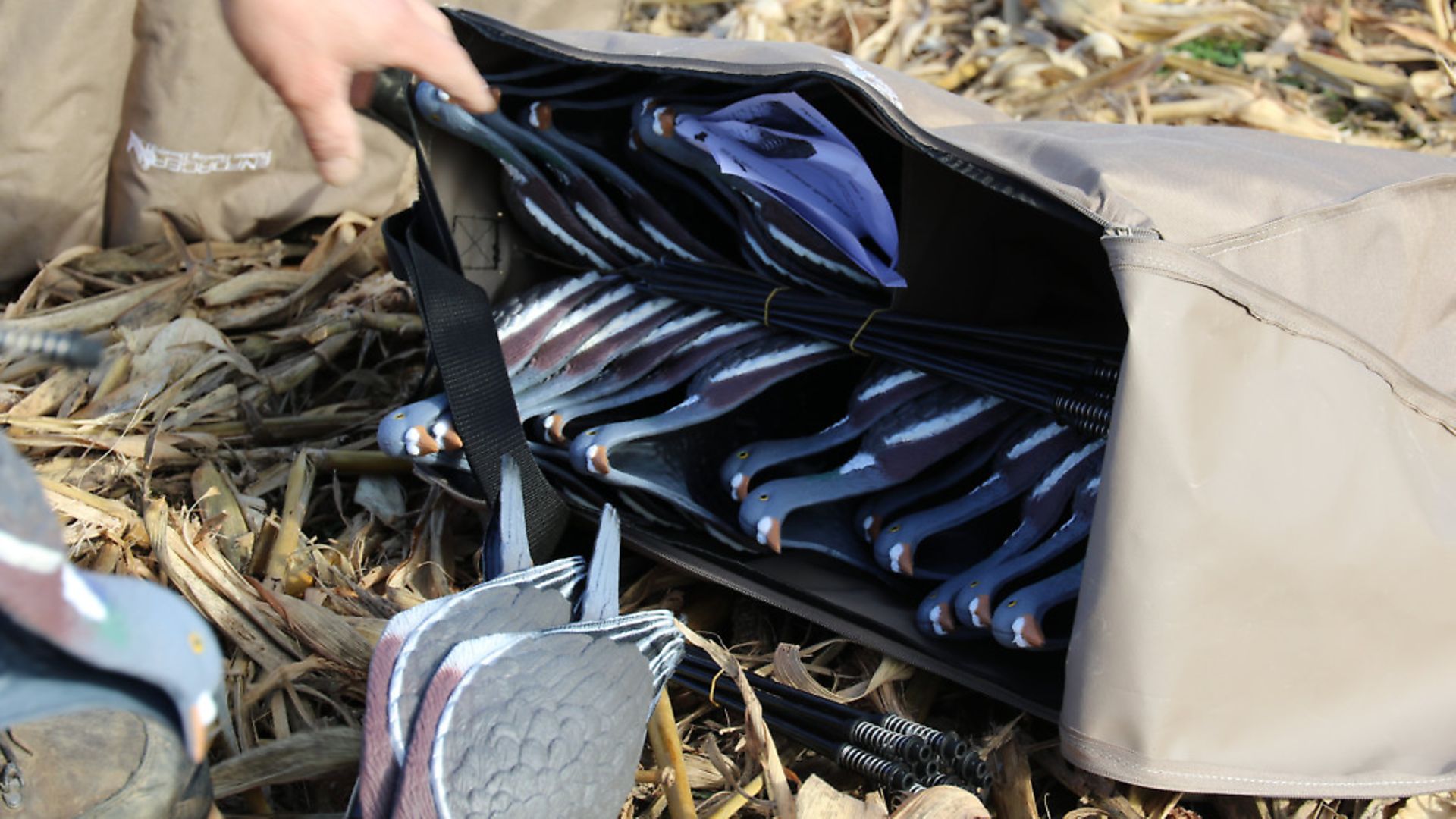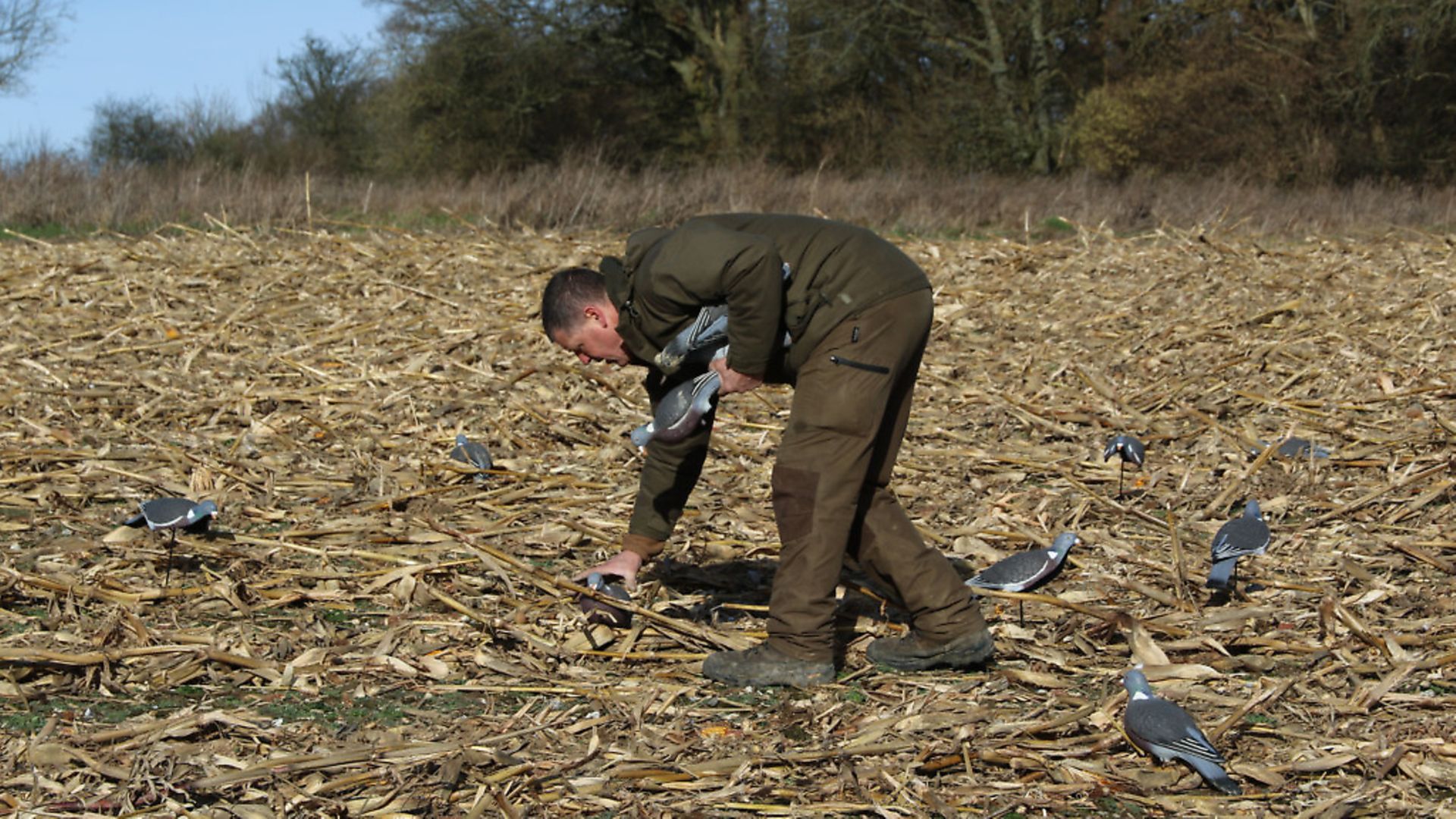Andy Crow lets us in on his top pigeon shooting tips, from reconnaissance to decoy patterns, hide building to shooting technique!
If you like this video on how to build a hedgerow hide, check out our new mini-series - Andy Crow’s pigeon shooting tips for beginners - on Shooting & Country TV! A collection of short videos covering hide building, pigeon decoys, flappers/rotaries and kit,
Covid-19 is still mercilessly messing with everyone’s plans and, news flash, it doesn’t give two hoots about print deadlines either. Since a trip to Kent definitely couldn’t be deemed essential in order to deliver a print article, we got on the phone instead, and set about coaxing this goldmine of information out of Andy. Two hours and 30 rounds of Baby Shark later, and here you have it. We sincerely hope you find it useful... do, do, do-do, do-do!
 credit: Archant
credit: Archant
Reconnaissance
Reconnaissance is the single most important factor in having a successful day. An hour spent watching today is worth 10 tomorrow when you’re shooting! Being a farmer, I’m out every day watching and learning what the birds are doing, so I know the best plan of attack when I do come to shoot a particular area.
Try and watch them for a few hours a day, for a few days before you shoot. Take note of where their flightlines are, whereabouts they are coming from, what time they are feeding and where... From this information, you can make an effective plan. Try not to shoot in the direction the birds are coming from, and I generally won’t be shooting at first light – I’ll let them have a feed; then they know where to come back to (this one is just my personal preference; some will shoot at first light and probably very successfully).
 credit: Archant
credit: Archant
Hide building
It sounds obvious, but make sure you’ve got enough room to comfortably fit you, your dog, and potentially your shooting partner into the hide, with space to safely load, close, mount and shoot the gun without getting caught in the nets or encroaching on your partner’s space. You’ll also need a little bit of space to put your shot birds, assuming it’s going well, and some people like to have a bucket seat in there too. Personally, I never sit down, but that’s my own preference.
I like my hide to be about two feet higher at the back than it is at the front, as this prevents you becoming silhouetted and really obvious to the birds when you stand to shoot. If I am building a hide in the middle of a field, with the possibility of 360° shooting, I still build the back higher; the ‘back’ in this scenario is the side of the hide the wind is hitting. Pigeons tend to land into the wind, so when you stand to shoot them, you’ll stay hidden if you build the back a little taller.
In terms of colour and camo netting, it really depends on your setting. If you’re shooting in a stubble field, you’re best to go for sand-coloured netting, whereas shooting in a grass field or tucking your hide into a hedge line will obviously call for green tones. In short, you’re trying to best match the background your hide will be set against. Gathering foliage and branches from close by and adding them to your netting is really effective and helps your hide blend into the surrounding greenery.
 credit: Archant
credit: Archant
Decoys
This is where wind direction plays a major part. As mentioned earlier, pigeons tend to land into the wind. So, for example, if the wind is coming from straight behind your hide, you’d set your pattern straight in front of your hide. Strong winds can be good as the birds tend to hold stronger, straighter flightlines to avoid being buffeted sideways; when there’s no wind at all or very low wind, you can on occasion get them coming from all directions.
In terms of the number/position of the decoys, I usually go with half a dozen just to the left, and half a dozen just to the right of a landing space in the middle of where you will shoot. I’ll also add a flapper or rotary to catch their attention. Sometimes they work well, other times the pigeons don’t seem to like them, so pay attention and if it seems like they are putting them off committing to the pattern, then take a pause and take the rotary out of the pattern. Remote controlled flappers are great because you can control them without leaving the hide and just set them off when you need them.
I tend to set the pattern about 25 yards out from the hide, with the back of the pattern at about 30 yards out. If it’s really windy, you’ll probably want it slightly closer to give yourself the best chance.
 credit: Archant
credit: Archant
Shooting in the hide
Stay low and, more importantly, still; it’s movement they see first. Look through the top of net, and stay down until the very last moment when the bird has definitely committed to the decoys and you can see a clear shot opportunity.
I usually won’t shoot at a big flock; I’ll try and wait for ones, twos or threes, but sometimes you need to, or sometimes they are just coming in really well! If that’s the case, I’ll usually aim to shoot something from the back of the flock – the last ones to decoy – and then clear up one or two from the front as the first birds flare up and away. This is because it takes the first birds who have landed longer to get up and away when your first shot startles them than it does for that bird at the back to get scared off before he’s fully committed.
 credit: Archant
credit: Archant
Shot birds
Don’t stack your shot birds on top of each other – they generate heat and can spoil, even in colder months. Try to lay them out on the ground. In summer, I usually lay out in the shade with a fine camo net on top to keep the flies off. In both scenarios, I get them into the chiller as soon as possible at the end of the day, and when you put them in the back of the truck to take them away, again lie them side by side. I use crates and then stack those to save room.
 credit: Archant
credit: Archant
Gun – Blaser F16
Cartridges – Gamebore Clear Pigeon (sometimes, Gamebore Extreme Pigeon, which will get through the trees and still pack a punch when roost shooting)
Rotary - Lightweight rotary from UK Shootwarehouse which is a great bit of kit
Decoys - Sillosocks decoys from UK Shootwarehouse are great, you can fit 20 in a rucksack so they’re useful when you have A long walk. I also add shot birds to the pattern.
Camo clothing – Jack Pyke’s English Oak Evolution is what I usually wear. You want camo for sure!
Ear plugs – Vario electronic custom-fit are comfy and let me communicate without taking them out
 credit: Archant
credit: Archant